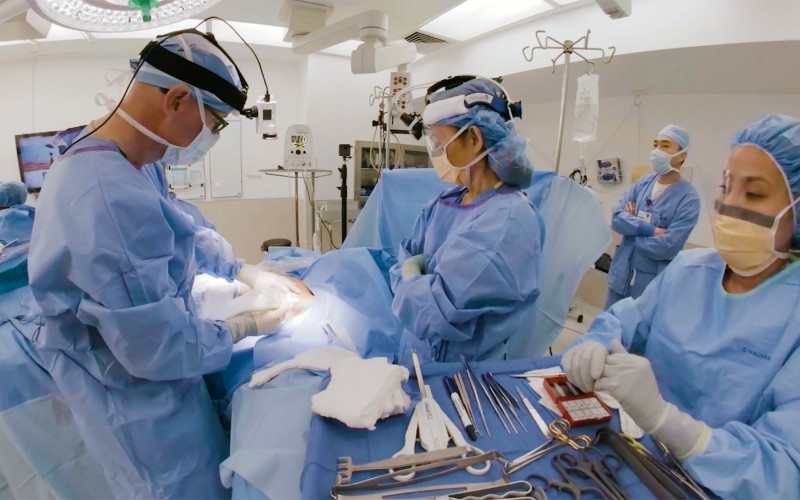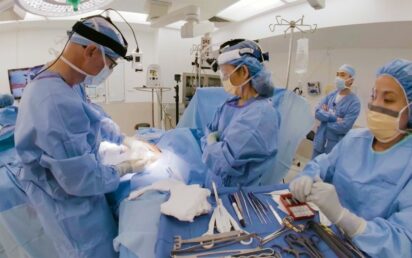Obesity has become one of the most pressing global health challenges, impacting millions and driving demand for effective weight-loss solutions. Bariatric surgery, once considered a niche intervention, is now a critical tool in combating this epidemic. As innovations in this market surge, new approaches are reshaping how obesity is treated worldwide.
An Expanding Market with Specificities
The bariatric surgery market has seen significant growth, valued at approximately $1.9 billion in 2022 and projected to reach $3.1 billion by 2030, with a CAGR of 5.4%. This growth reflects not only the rising prevalence of obesity but also advancements in surgical techniques and a growing acceptance of these procedures as a viable long-term solution.
Bariatric surgery includes several types, such as gastric bypass, sleeve gastrectomy, b adjustable gastric bands, and biliopancreatic diversion with duodenal switch. These procedures are tailored to help patients achieve sustainable weight loss by either limiting food intake or reducing nutrient absorption.
North America leads the market, with the United States accounting for the majority of procedures globally, driven by widespread healthcare access and high obesity rates. However, the Asia-Pacific region is emerging as a promising market, owing to improved healthcare infrastructure and increased awareness of bariatric options.
Prominent players in this field include Medtronic, Ethicon (a Johnson & Johnson company), and Apollo Endosurgery, which continue to invest in developing advanced technologies to improve outcomes and patient experiences.
Yet, despite its growth, challenges persist. The high cost of procedures, limited access in lower-income regions, and the inherent risks of surgery can be significant deterrents. These barriers have spurred the rise of less invasive, innovative weight-loss solutions that cater to a broader patient base.
Innovative Solutions Revolutionizing Weight Loss
The evolution of the bariatric market is shaped by innovation aimed at enhancing patient’s experience through weight loss while maximizing the results obtained. Pharmaceutical latest revolution is the release of GLP-1 agonist medications, made out of molecules stimulating specific body sensors within the digestive system to slow down metabolism. Clinical trials report an average weight reduction of up to 15% among patients using semaglutide, which is a type of product that is part of the GLP-1 family.
Adjustable gastric balloons offer another promising alternative to traditional bariatric surgery. Placed into the stomach endoscopically, the balloon reduces the space available for food in the stomach. Patients feel full faster, and therefore eat less and can lose weight. No surgery is required to install the device into the patient’s stomach. This method is non-invasive and temporary, the balloon is taken out after a year, which is also reassuring for patients.
Other emerging technologies include robotic surgical systems, such as da Vinci Surgical Systems, which enhance precision and minimize recovery times. These innovations demonstrate how technology is transforming bariatric treatments, making them safer and more effective.
These non-surgical options complement traditional bariatric procedures, creating a holistic ecosystem of weight-loss solutions. Patients now have more choices tailored to their unique medical needs and preferences, improving accessibility and outcomes across the board.
The Road Ahead
The future of the bariatric surgery market looks brighter than ever, driven by increasing awareness of obesity’s health implications and the development of innovative treatment options. However, growth alone is not enough, the market must address key challenges to reach its full potential.
One of the main hurdles remains cost. Surgical procedures can be rather expensive, and insurance companies are often reluctant to take bariatric procedures in charge. The problem is the same for weight loss medications, which represent the most popular alternative for surgery. These treatments must be taken in the long term to maintain positive results over the years, meaning patients have to pay for them for their entire life, which is an investment many can’t afford. However, this aspect is changing as well, as more temporary procedures emerge, including the adjustable gastric balloon cited earlier. While traditional approaches such as gastric bypasses come with a cost of $15.000-$30.000, the cost of a Spatz3 gastric balloon, the first adjustable, non-surgical balloon approved by the FDA in the US, ranges between $6.000 and 9.000$.
Another critical challenge is accessibility. While North America and Europe lead the market in terms of volume and advanced technologies, other regions lag behind due to limited healthcare infrastructure. Strengthening healthcare systems in developing countries will play a pivotal role in ensuring these treatments reach underserved populations. Another side of the problem is the fact that obesity causes major health issues for patients, putting them at risk when it comes to treatments like surgical procedures. Developing multiple safer alternatives is essential to beagle to treat safely every person in need.
Meanwhile, innovation continues to advance. Technologies such as robotic-assisted surgeries and AI-driven tools for pre- and post-operative care are expected to streamline procedures and improve success rates. These advancements will likely drive down costs over time, making bariatric surgery a more viable option for patients worldwide, hence extending the market size.
The role of education and awareness cannot be overstated either. Misconceptions about bariatric surgery and alternative weight-loss interventions still deter many individuals from seeking treatment. Increasing awareness campaigns, coupled with testimonials from successful patients, could reduce the stigma surrounding these procedures and encourage more people to explore their options. Education of the population is part of the government’s responsibilities, which is why policies and public service improvements are so important for the bariatric industry.
Conclusion
As the bariatric surgery market evolves, it will not only serve as a cornerstone in addressing obesity but also as a benchmark for innovation in healthcare. The industry is shifting from a predominantly surgical focus to a more inclusive ecosystem of treatments that combine medical devices, pharmaceuticals, and personalized care plans.
The integration of gastric balloons, semaglutide, and advanced surgical options ensures patients have access to a broader range of solutions that cater to their specific needs. This diversity of options is crucial in creating long-term strategies for weight management, particularly as global obesity rates continue to rise.
Furthermore, the collaborative efforts of key stakeholders, including governments, healthcare providers, and private companies, are essential in addressing barriers such as cost and accessibility. As these challenges are overcome, the potential for the bariatric market to transform lives will only grow.


